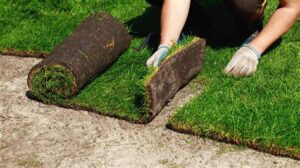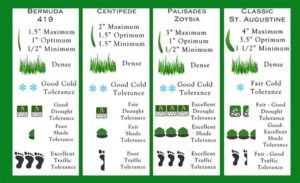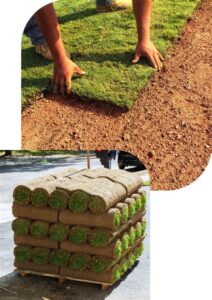Transforming your outdoor space with lush, vibrant sod can greatly enhance the beauty and value of your home. However, navigating the costs associated with sod installation can be overwhelming. That’s where our Sod Installation Cost Calculator comes in. This essential tool empowers homeowners to effectively plan their lawn budgets with confidence. By considering various factors, such as the type of sod you choose and the area you need to cover, our calculator simplifies the budgeting process. In this article, we’ll explore how to make informed decisions, from selecting the right sod to determining whether a DIY approach or hiring professionals is best for you. Get ready to cultivate the lawn of your dreams while staying within budget!
Understanding The Factors That Affect Sod Installation Costs
When planning your lawn budget, it’s essential to grasp the various factors that can impact the total sod installation costs. Understanding these elements allows you to make more informed decisions and accurately assess your financial requirements.
- Type of Sod: Different types of sod come at varying prices. For instance, premium varieties like Bermuda or Kentucky Bluegrass may be more expensive than standard options such as fescue. Choosing the right type can significantly influence your overall cost.
- Preparation of the Soil: The condition of your existing soil plays a crucial role in sod installation costs. If your lawn requires extensive soil amendments, grading, or the removal of debris, expect additional charges.
- Size of the Area: The larger the area to be covered with sod, the more you will pay. Accurate measurements are essential for calculating the total square footage needed.
- Geographical Location: Prices for sod and installation can vary based on your location. Urban areas may incur higher transportation and labor costs compared to rural settings.
- Labor Costs: Hiring professional installers generally includes labor fees, which can fluctuate based on demand, seasonality, and your local market’s rates.
- Season: The time of year affects prices, as some seasons may see higher demand for sod installation services, leading to increased costs.
By considering these factors, you can better plan your budget and approach your sod installation project with clarity and confidence.
How To Choose The Right Sod For Your Lawn
Choosing the right sod is essential for achieving a lush, healthy lawn that thrives in your specific environment. Here are several key considerations that will help guide you in this important decision:
- Climate Suitability: Different sod types are adapted to various climate conditions. For instance, cool-season grasses, such as Kentucky Bluegrass, are ideal for northern climates, while warm-season grasses, like Bermuda and Zoysia, thrive in southern areas. Evaluate your local climate and choose accordingly.
- Sunlight Requirements: Consider how much sunlight your lawn receives daily. Some sod varieties, like Bahia, prefer full sun, while others, like Fescue, can tolerate shade. Assess the light conditions in your yard before making a choice.
- Soil Type: The composition of your soil can significantly influence the growth of your sod. Sandy soils drain well but may require more frequent watering, while clay soils retain moisture but can become compacted. Test your soil type and select a sod type that matches its characteristics.
- Use and Purpose: Think about how you will use your lawn. If it’s for heavy foot traffic, consider durable grass types like Bermuda. If it’s primarily for aesthetic appeal, finer varieties, such as Bluegrass, may be more suitable.
- Maintenance Requirements: Some sod varieties require more upkeep than others. If you prefer a low-maintenance lawn, opt for drought-resistant types or those that require less mowing and fertilization.
By taking the time to assess these factors and matching them with the right sod variety, you can ensure a successful sod installation that meets your aesthetic and functional needs.
Calculating The Area For Accurate Sod Installation Measurement
To ensure a successful sod installation, accurately calculating the area where you plan to lay the sod is crucial. This measurement will not only help you determine how much sod you need to purchase but also assist in estimating the overall cost of your project. Here’s how you can effectively calculate the area for your sod installation:
- Step 1: Identify the shape of the area where you plan to install the sod. Most lawns are rectangular, square, or circular, but some may have irregular shapes.
- Step 2: For rectangular or square areas, use the formula:
Area = Length x Width
Measure the length and width of the area in feet, then multiply these two dimensions to get the total square footage. - Step 3: For circular areas, use the formula:
Area = π x (Radius x Radius)
Measure the radius of the circle and square it, then multiply by π (approximately 3.14). - Step 4: If you’re dealing with irregular shapes, divide the area into smaller, manageable shapes (rectangles or triangles), calculate their individual areas, and sum them up.
- Step 5: After obtaining the total area in square feet, you can convert this figure to square yards (as sod is typically sold by the square yard) by dividing by 9, since there are 9 square feet in a square yard.
For example: If your total area is 900 square feet, then 900 ÷ 9 = 100 square yards.
By following these steps, you’ll have a precise measurement for your sod installation project, ensuring that you purchase the right amount of sod and plan your budget effectively.
Planning Your Budget For Sod Installation: A Step-By-Step Guide
Creating a budget for your sod installation project is essential to ensure that you stay within your financial means while achieving the lawn of your dreams. Here’s a detailed step-by-step guide to help you plan your budget effectively.
Step 1: Determine Your Lawn Size
Measure your lawn area to get an accurate size for sod requirements. Knowing the square footage will aid in calculating the amount of sod you’ll need, influencing the overall cost.
Step 2: Estimate Sod Costs
Research local prices for different types of sod. Prices can vary based on the variety and quality. Generally, expect to pay between $0.30 to $1.50 per square foot. Multiply the cost per square foot by the total square footage to get an initial estimate for the sod.
Step 3: Include Additional Materials
Factor in the cost of soil amendments, fertilizers, and other necessary materials. Depending on the initial soil quality, you may need additional products to enhance growth.
Step 4: Assess Labor Costs
Decide whether you’ll take the DIY route or hire professionals for sod installation. If going DIY, consider your time and effort. If hiring, get quotes from different contractors and assess what their labor rates include.
Step 5: Account for Equipment Rental
If you’re installing sod yourself, you may need to rent equipment like a sod cutter or tiller. Gather rental prices and include these in your budget.
Step 6: Calculate Installation and Maintenance Costs
Include post-installation costs such as watering, mowing, and maintaining your sod for optimal growth. Plan for recurring expenses to keep your lawn healthy and beautiful.
Step 7: Prepare for Contingencies
It’s wise to set aside a portion of your budget for unexpected expenses, whether related to sod replacement, additional materials, or labor shifts. A 10-15% contingency reserve is often recommended.
Step 8: Final Review and Adjustments
Once you’ve compiled all your potential costs, review your budget thoroughly. Adjust any figures as needed based on your research and quotes to ensure you have a realistic total.
By following these steps, you can create a comprehensive budget for your sod installation project, helping you manage costs effectively while ensuring a successful outcome for your lawn renovation.
Comparing DIY Vs. Professional Sod Installation Costs
When considering sod installation, one of the biggest decisions is whether to tackle the project yourself or hire a professional. Each option has its own set of costs and benefits that can significantly impact your overall budget.
Here’s a breakdown of the two approaches:
| Cost Factors | DIY Installation | Professional Installation |
|---|---|---|
| Labor Costs | No labor costs, but requires time and effort | Labor costs included; rates vary by region and experience |
| Sod Materials | Cost of sod is the main expense | Cost of sod plus potential markup |
| Tools and Equipment | Possible rental costs for equipment | Tools and equipment generally provided |
| Time | Can take longer without experience | Typically faster due to expertise |
| Quality Assurance | Quality relies on personal skill | Professional guarantees quality and warranty |
The choice between DIY and professional sod installation depends on your budget, availability, and willingness to invest time into the project. A DIY approach can save money, but it may not always yield the best results if you’re inexperienced. On the other hand, hiring a professional can increase your upfront costs but often guarantees a higher quality outcome and reduces the risk of future issues.
Frequently Asked Questions
What is a sod installation cost calculator?
A sod installation cost calculator is a tool that helps homeowners estimate the expenses associated with laying sod on their lawn, including factors like materials, labor, and additional services.
What factors influence the cost of sod installation?
Factors that influence the cost include the type of sod chosen, the size of the area to be covered, soil preparation needs, labor costs, and any additional landscaping services required.
How can I determine the size of my lawn for sod installation?
To determine the size of your lawn, measure the length and width of the area needing sod and multiply these measurements to calculate the total square footage.
Is it worth investing in high-quality sod?
Investing in high-quality sod can lead to a more resilient and lush lawn, which may require less maintenance and provide better aesthetic appeal over time.
How do I prepare my lawn before installing sod?
Preparing your lawn involves clearing debris, testing and amending the soil, leveling the area, and watering the soil to ensure optimal conditions for the new sod.
What is the average cost of sod installation per square foot?
The average cost of sod installation typically ranges from $0.50 to $2.00 per square foot, depending on factors like sod type and geographical location.
Can I install sod myself to save on costs?
Yes, you can install sod yourself to save on labor costs, but it requires careful planning and physical work. It’s important to follow best practices for soil preparation and sod care to ensure a successful installation.





